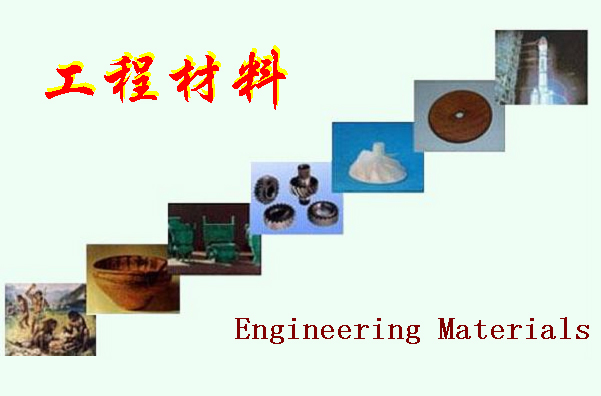
当前课程知识点:Microbiology > Chapter 5 Microbial metabolism > 5.11 Anabolism of microorganisms (3) > How is bacterial terpene alcohol regenerated?
How is bacterial terpene alcohol regenerated?
-0.1 Characteristics and research objects of microbiology
--Characteristics and research objects of microbiology
--Characteristics and research objects of microbiology
--Which groups of microorganisms are included?
--What are the research objects of microbiology?
-0.2 The discovery of microorganisms and the history of microbiology
--The discovery of microorganisms and the history of microbiology
--The discovery of microorganisms and the history of microbiology
-0.3 Types and characteristics of microorganisms
--Types and characteristics of microorganisms
--Types and characteristics of microorganisms
--What are the characteristics of microorganisms?
--Why do we say "microorganisms are everytime and everywhere"?
-0.4 The role of microorganisms
--Explain the application of microorganisms in agriculture, industry, environment and medicine.
-0.5 Prospects for the future development of microbiology
--Prospects for the future development of microbiology
--Prospects for the future development of microbiology
-Unit Test Questions of Introduction
--Unit Test Questions of Introduction
-1.1 Structure and function of prokaryotic microbial cells
--Structure and function of prokaryotic microbial cells
--Structure and function of prokaryotic microbial cells
--What are the basic components of prokaryotic microorganisms
--The basic shape and size range of prokaryotic microbial cells
-1.2 The cell wall of prokaryotic microorganisms
--The cell wall of prokaryotic microorganisms
--The cell wall of prokaryotic microorganisms
--The operation steps and principles of Gram staining
-1.3 Plasma membrane, inner membrane structure, and cell contents of prokaryotic microbial cells
--Plasma membrane, inner membrane structure, and cell contents of prokaryotic microbial cells
--Plasma membrane, inner membrane structure, and cell contents of prokaryotic microbial cells
--Structure and function of bacterial cell membrane
-1.4 The accessory structure of bacterial cells
--The accessory structure of bacterial cells
--The accessory structure of bacterial cells
--Spore structure, function, formation process, and what are the characteristics
--What is the difference between the flagella structure of Gram-positive and negative cells.
-1.5 Comparison of prokaryotic cells and eukaryotic cells
--Comparison of prokaryotic cells and eukaryotic cells
--Comparison of prokaryotic cells and eukaryotic cells
--The difference between prokaryotic cells and eukaryotic cells in cell wall and cell membrane
-1.6 Classification and identification of prokaryotic microorganisms (1)
--Classification and identification of prokaryotic microorganisms (1)
--Classification and identification of prokaryotic microorganisms (1)
--What are the two major categories of the basis or principles of biological classification?
--What are the taxonomic units below the prokaryotic microorganism "species"
-1.7 Classification and identification of prokaryotic microorganisms (2)
--Classification and identification of prokaryotic microorganisms (2)
--Classification and identification of prokaryotic microorganisms (2)
--Which technologies are used for microbial classification in biochemistry and nucleic acid molecules?
-1.8 Classification and identification of prokaryotic microorganisms (3)
--Classification and identification of prokaryotic microorganisms (3)
--Classification and identification of prokaryotic microorganisms (3)
--What is the main basis for introducing the classification of bacteria in the two Berger's Handbooks?
-1.9 Bacteria (1)
--Why is Bacillus thuringiensis known as an expert in insecticide?
--How does tetanus happen? How to prevent it?
-1.10 Bacteria (2)
--Compare the differences between Rhizobium and Agrobacterium.
--What are the special habits of Bdellovibrio?
-1.11 Special bacteria
--How are sheath bacteria formed?
--What is the significance of studying myxobacteria?
-1.12 Mycoplasma, Rickettsia and Chlamydia
--Mycoplasma, Rickettsia and Chlamydia
--Mycoplasma, Rickettsia and Chlamydia
--The difference between Mycoplasma, Rickettsia and Chlamydia and bacteria and viruses
--What is the contribution of Chinese microbiologist Tang Feifan?
-1.13 Actinomycetes
--What are the typical forms of actinomycetes?
--What is the reproduction method of actinomycetes?
-1.14 Prokaryotic microorganisms-cyanobacteria
--Prokaryotic microorganisms-cyanobacteria
--Prokaryotic microorganisms-cyanobacteria
--Why are cyanobacteria classified from algae to bacteria?
--What is water bloom? How to control water bloom?
-1.15 Prokaryotic microorganisms-archaea
--Prokaryotic microorganisms-archaea
--Prokaryotic microorganisms-archaea
--Where can I find methanogens? Discuss the importance of methane bacteria ecology and application.
-Chapter 1 Unit Test Questions of Prokaryotic Microbiology
--Unit Test Questions of Prokaryotic Microbiology
-2.1 Overview of eukaryotic microorganisms
--Overview of eukaryotic microorganisms
--Overview of eukaryotic microorganisms
--Why are plants and animals referred to as producers and consumers, and fungi as converters?
-2.2 Fungal classification system and common filamentous fungi
--Fungal classification system and common filamentous fungi
--Fungal classification system and common filamentous fungi
--How many kinds of fungi are currently known?
-2.3 Yeast
--Yeast
--Yeast
--What is the difference between yeast colony morphology and bacteria?
--What are the hazards of yeast to human health? Why are yeasts considered conditional pathogens?
-2.4 The characteristics and nutrition of filamentous fungi
--The characteristics and nutrition of filamentous fungi
--The characteristics and nutrition of filamentous fungi
-2.5 Asexual and sexual reproduction of filamentous fungi
--Asexual and sexual reproduction of filamentous fungi
--Asexual and sexual reproduction of filamentous fungi
--What is the difference between fungal spores and bacterial spores?
--What kinds of fungal asexual spores are there? What is the formation process of each asexual spore?
-2.6 Penicillium and Penicillin
--Talk about your views on Fleming's "Negligence" discovery of penicillin and won the Nobel Prize.
-2.7 Microalgae
--How to prevent algae disasters?
--What is the significance of algae in nature?
-2.8 Protozoa
--Protozoa
--Protozoa
--Why is it that protozoa are neither animals nor plants?
--Give examples of the benefits of protozoa to humans?
-Chapter 2 Unit Test Questions of Eukaryotic Microbiology
--Chapter 2 Unit Test Questions of Eukaryotic Microbiology
-3.1 Overview of the virus
--Why are antibiotics ineffective against viruses, but interferons are effective?
--How can we use viruses? Give an example.
-3.2 Introduction to bacteriophages
--Introduction to bacteriophages
--Introduction to bacteriophages
--What are the main morphological types and structural composition of bacteriophages?
--What are the chemical components of viruses? Where are they distributed in virus particles?
-3.3 Vigorous phage and one-step growth curve
--Vigorous phage and one-step growth curve
--Vigorous phage and one-step growth curve
--Describe the infection process of virulent phage.
--How to determine the one-step growth curve?
-3.4 Mild phage and lysogenicity
--Describe the characteristics of lysogenic bacteria.
--What is the difference between lambda phage and PI phage?
-3.5 Animal viruses
--Is it possible for viruses to be used as biological weapons for terrorist attacks?
--Give examples of other viruses that have had a major impact on human life and health in history?
-3.6 Plant viruses
--Describe the main characteristics of plant viruses.
-3.7 Insect viruses
--Briefly describe the infection and transmission methods of insect viruses
-3.8 Sub-virus
--Why is the discovery of subviruses a major event in the life sciences of the 20th century?
--Compare the main difference between satellite virus and satellite RNA.
-Chapter 3 Unit Test Questions of Virus
--Chapter 3 Unit Test Questions of Virus
-4.1 Nutrients of microorganisms
-4.2 Nutritional types of microorganisms
--Nutritional types of microorganisms
--Nutritional types of microorganisms
--What are the types of chemical energy organic nutrient microorganisms?
-4.3 Absorption of nutrients by microorganisms
--Absorption of nutrients by microorganisms
--Absorption of nutrients by microorganisms
--Briefly describe the characteristics of active transport and the main substances transported
-4.4 Medium for microorganisms
--What is the coagulant commonly used as a solid medium? What are its characteristics?
--What problems should be paid attention to when preparing medium?
-Chapter 4 Unit Test Questions of Microbial Nutrition
--Chapter 4 Unit Test Questions of Microbial Nutrition
-5.1 Basic concepts of microbial metabolism
--Basic concepts of microbial metabolism
--Basic concepts of microbial metabolism
--What are the links of biological oxidation?
--Compare the similarities and differences between the three methods of ATP production.
-5.2 Biological oxidation of chemical heterotrophic microorganisms-substrate dehydrogenation
--Biological oxidation of chemical heterotrophic microorganisms-substrate dehydrogenation
--Biological oxidation of chemical heterotrophic microorganisms-substrate dehydrogenation
-5.3 Biological oxidation-respiration of chemical heterotrophic microorganisms
--Biological oxidation-respiration of chemical heterotrophic microorganisms
--Biological oxidation-respiration of chemical heterotrophic microorganisms
--What are the characteristics of the bacterial respiratory chain?
-5.4 Biological oxidation-fermentation of chemical heterotrophic microorganisms
--Biological oxidation-fermentation of chemical heterotrophic microorganisms
--Biological oxidation-fermentation of chemical heterotrophic microorganisms
--Compare bacterial alcohol fermentation with yeast alcohol fermentation.
-5.5 Energy metabolism of chemoautotrophic microorganisms
--Energy metabolism of chemoautotrophic microorganisms
--Energy metabolism of chemoautotrophic microorganisms
--How many types of hydrogenase are there in hydrogen bacteria?
--Why are obligate autotrophic bacteria aerobic?
-5.6 Energy metabolism of light energy microorganisms
--Energy metabolism of light energy microorganisms
--Energy metabolism of light energy microorganisms
--What are the six categories of prokaryotic photosynthetic organisms?
--Describe the composition of the photosynthetic system of photosynthetic bacteria.
-5.7 Catabolism of microorganisms
--Catabolism of microorganisms
--Catabolism of microorganisms
--How many stages of catabolism are generally divided into?
--What are the characteristics of EMP, HMP, ED and TCA pathways?
-5.8 Biological nitrogen fixation
--Biological nitrogen fixation
--Biological nitrogen fixation
--Briefly describe the mechanism of nitrogen fixation.
--Necessary conditions for biological nitrogen fixation
-5.9 Anabolism of microorganisms (1)
--Anabolism of microorganisms (1)
--Anabolism of microorganisms (1)
--What are the types of microbial synthesis reactions?
--What are the three elements of anabolism?
-5.10 Anabolism of microorganisms (2)
--Anabolism of microorganisms (2)
--Anabolism of microorganisms (2)
--What are the four important ways to fix carbon dioxide? Which approach is earlier in evolution?
-5.11 Anabolism of microorganisms (3)
--Anabolism of microorganisms (3)
--Anabolism of microorganisms (3)
--Describe the specific steps of peptidoglycan synthesis.
--How is bacterial terpene alcohol regenerated?
-Chapter 5 Unit Test Questions of Microbial Metabolism
--Chapter 5 Unit Test Questions of Microbial Metabolism
-6.1 The cell cycle of bacteria
--What is the difference between growth and reproduction?
--What is growth? What is development?
-6.2 Colony growth of microorganisms
--Colony growth of microorganisms
--Colony growth of microorganisms
--The basic law of bacterial population growth?
-6.3 Determination of microbial growth
--Determination of microbial growth
--Determination of microbial growth
--What are the methods for measuring the growth of microorganisms?
--What is the practical significance of microbial growth measurement?
-6.4 Environmental factors affecting the growth of microorganisms
--Environmental factors affecting the growth of microorganisms
--Environmental factors affecting the growth of microorganisms
--What is the pH range in which bacteria, actinomycetes, and fungi can grow? What is the optimum pH?
-6.5 Control of microbial growth (1)
--Control of microbial growth (1)
--Control of microbial growth (1)
--Compare the difference between sterilization, disinfection and preservation.
--Why are the process conditions of autoclave sterilization lower than that of dry heat sterilization?
-6.6 Controlling the growth of microorganisms (2)
--Controlling the growth of microorganisms (2)
--Controlling the growth of microorganisms (2)
--What are the main chemical substances that control the growth of microorganisms?
-6.7 Control of microbial growth (3)
--Control of microbial growth (3)
--Control of microbial growth (3)
--Briefly describe the mechanism of bacterial resistance to antibiotics
--Briefly describe the biological factors that affect the growth of microorganisms?
-Chapter 6 Unit Test Questions of Microbial Growth and Control
--Chapter 6 Unit Test Questions of Microbial Growth and Control
-7.1 Overview of Microbial Ecosystem
--Overview of Microbial Ecosystem
--Overview of Microbial Ecosystem
--Briefly describe the characteristics of the microbial ecosystem?
--The role and composition of the microbial ecosystem
-7.2 Soil microorganisms
--Why do we say that the soil has the conditions for microbial life?
--What microorganisms are in the soil?
-7.3 Water environment microorganisms
--Water environment microorganisms
--Water environment microorganisms
--How to use the role of microorganisms to manage the eutrophication of water bodies?
-7.4 Air and extreme environment microorganisms
--Air and extreme environment microorganisms
--Air and extreme environment microorganisms
--Where do the microorganisms in the air come from?
--What are the main groups of microorganisms in the air?
-7.5 Uncultured microorganisms
--What is the reason why the microorganism has not been cultivated?
-7.6 Interrelationships between microbial populations
--Interrelationships between microbial populations
--Interrelationships between microbial populations
--What are the relationships between microbial populations? Give an example for each.
--What are the typical parasitic relationships? for example
-7.7 The mutual growth and the parasitic relationship between microorganisms and plants
--The mutual growth and the parasitic relationship between microorganisms and plants
--The mutual growth and the parasitic relationship between microorganisms and plants
--Briefly describe the groups of microorganisms that cause plant diseases.
-7.8 The symbiotic relationship between microorganisms and plants: nodules
--The symbiotic relationship between microorganisms and plants: nodules
--The symbiotic relationship between microorganisms and plants: nodules
--How to understand the three basic characteristics of rhizobia?
--Discuss the nodule formation process and nitrogen fixation.
-7.9 Production and application of rhizobia
--Production and application of rhizobia
--Production and application of rhizobia
--Compared with chemical nitrogen fertilizers, what are the advantages of rhizobia inoculants?
--Which bacterial agents or environmental factors will affect the application effect of inoculants?
-7.10 The symbiotic relationship between microorganisms and plants: Mycorrhiza (1)
--The symbiotic relationship between microorganisms and plants: Mycorrhiza (1)
--The symbiotic relationship between microorganisms and plants: Mycorrhiza (1)
--Compare the characteristics of endophytic mycorrhiza and ectomycorrhiza.
--Briefly describe the formation conditions of ectomycorrhiza
-7.11 The symbiotic relationship between microorganisms and plants: Mycorrhiza (2)
--The symbiotic relationship between microorganisms and plants: Mycorrhiza (2)
--The symbiotic relationship between microorganisms and plants: Mycorrhiza (2)
--Briefly describe the structural characteristics and types of endophytic mycorrhiza?
--The role of arbuscular mycorrhizal fungi?
-7.12 The relationship between microorganisms and animals
--The relationship between microorganisms and animals
--The relationship between microorganisms and animals
--What kind of relationship exists between microorganisms and animals? Give an example for each.
-7.13 The role of microorganisms in the material cycle of nature (1)
--The role of microorganisms in the material cycle of nature (1)
--The role of microorganisms in the material cycle of nature (1)
--Describe the role of microorganisms in the carbon cycle.
--Describe the role of microorganisms in the nitrogen cycle.
-7.14 The role of microorganisms in the circulation of substances in nature (2)
--The role of microorganisms in the circulation of substances in nature (2)
--The role of microorganisms in the circulation of substances in nature (2)
--Describe the role of microorganisms in the phosphorus cycle.
--Describe the role of microorganisms in the sulfur cycle.
-Chapter 7 Unit Test Questions of Microbial Ecological
--Chapter 7 Unit Test Questions of Microbial Ecological
-8.1 The material basis of genetic variation
--8.1 The material basis of genetic variation
--The material basis of genetic variation
--Nucleic acid is the material basis of genetic variation, is there any other genetic material?
--Describe an experimental method that proves that genetic material is DNA transformation.
-8.2 Microbial Genome
--Briefly describe the characteristics of the microbial genome
--Briefly describe how the genome exists
-8.3 Genetic recombination of bacteria
--Genetic recombination of bacteria
--Genetic recombination of bacteria
--Discuss gene recombination and methods of bacteria
--Which method is faster, conversion or combination?
-8.4 Transduction of bacteria
--Discuss the type and formation mechanism of transduction.
--Do you think there is a phenomenon that leads to death?
-8.5 Conjugation of bacteria
--What are the cell forms and characteristics of factor F?
--The pros and cons of high-frequency recombinant strains?
-8.6 Fungal gene recombination
--Briefly describe the process of sexual hybridization
--Brief description of quasi-reproductive process
-8.7 Gene mutation rules and molecular basis
--Gene mutation rules and molecular basis
--Gene mutation rules and molecular basis
--Describe the types and mechanisms of gene mutations
--What are the main types of mutants of microorganisms?
-8.8 Principle of induced mutation
--Principle of induced mutation
--Principle of induced mutation
--Briefly describe the principle of physical and chemical mutagenesis
--Describe the mutagenic mechanism of nitrous acid.
-8.9 DNA damage repair
--Brief description of DNA damage repair methods
--If you suspect that you have been injured, what emergency measures should you take
-8.10 Microbial mutation breeding
--Briefly describe the principles and methods of microbial mutation breeding
--The types and dosages of mutagens for microbial mutation breeding
-Chapter 8 Unit Test Questions of Microbial Genetic and Variation
--Chapter 8 Unit Test Questions of Microbial Genetic and Variation
-What is your feeling after completing the course?
-Microbiology Course Exam



